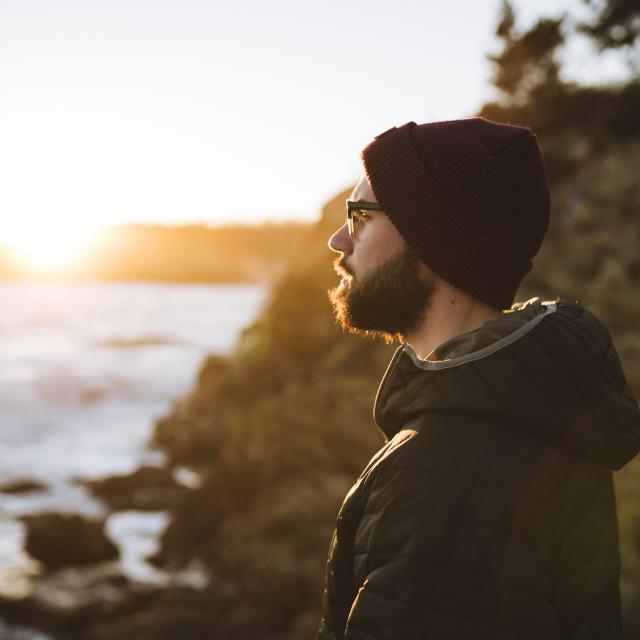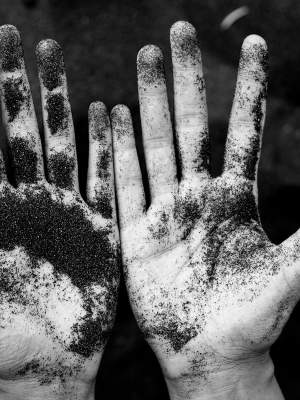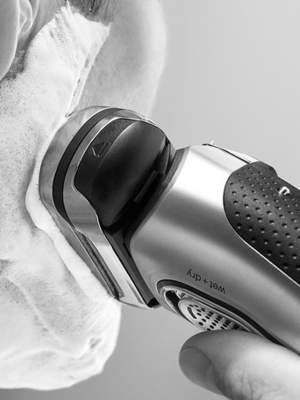- The best sunscreen at the moment
- What is SPF?
- 3 types of UV
- How much sunscreen?
- Recommended sun factor
- FAQ
Ultraviolet radiation is always there, even when the sun doesn’t appear to be out. It is therefore important to protect your skin well by using a cream or moisturizer with a Sun Protection Factor (SPF) of at least 30.
This is better known as sunscreen. We should all use it as soon as the sun comes out from behind the clouds. This protection factor is in sun creams and should protect our skin against that unwanted lobster tan aka sunburn.
But what exactly is SPF? And why is it so important that we use it on a daily basis?
What is SPF?
SPF stands for Sun Protection Factor. It indicates how long a sunscreen can protect your skin against the harmful UV rays (specifically UVB rays) of the sun.
SPF only protects against UVB radiation and not UVA radiation. Broad-spectrum sunscreen does protect against both. You can read more about the differences below.
How long you can sit in the sun does not only depend on the SPF, but also on your skin type, for example. For example, if you can sit in the sun for ten minutes without getting sunburnt, with SPF10 you would this time multiply to one hundred minutes.
- Sun protection Factor of 15: Protects against 93% UV radiation. So you can stay 15x longer in the sun until you get burned. Well suited for sunny days when you don’t stay in the sun all the time.
- Sun Protection Factor 30: Protects against 97% UV radiation. So you can stay 30x longer in the sun until you get burned. Well suited for sunny days when you spend more time outside.
- Sun Protection Factor 50: Protects against 98% UV radiation. So you can stay 50x longer in the sun until you get burned. Extremely well suited for sunny days when you spend most of the day outside.
UV radiation
UV radiation comes in three varieties: UVB, UVC and UVA.
UVA and UVB radiation is always present (even on very cloudy days) and therefore continuously affects your skin.
UVA is thereby the biggest culprit in premature aging of the skin and increases premature skin cancer. Virtually all UV radiation that comes into contact with your skin is the type of UVA.
UVA radiation
UVA radiation penetrates the top layer of the skin and reaches the ‘dermis’, where elastin fibers and collagen fibers are attacked.
The decrease in colleges in the skin is what ultimately causes the skin to feel (and become!) Less flexible. Because UVA radiation penetrates deep into the dermis, mutations are caused that can cause skin cancer.
UVB radiation
UVB radiation is the variant that affects the outer, visible layer of the skin on which the sought-after ‘bronze’ color is created. The first stage of burn is red skin. UVB radiation is also always present, but to a lesser extent on cloudy days.
UVB signals the skin to produce Vitamin D. However, it is not scientifically substantiated from exactly how much UVB radiation this is.
Why is sunscreen so important?
If you lie in the sun too much, you will notice it in the condition of your skin. You discover brown spots, lines and wrinkles and even a dull complexion.
Not only that, unprotected sun exposure can also cause skin cancer. SPF helps protect your skin, but it also gives your skin a chance to repair itself from damage previously suffered.
Incidentally, we do not only find SPF in sunscreens. Moisturizers and other care products also often have added SPF, so that you are protected against UV rays every day. You’re then essentially buying a 2-in-1 product which has an extra good function.
→ Read more: Facial care for men
When should you use sunscreen with SPF?
You would think that you only need to apply SPF when the temperature hits 25 degrees. Or when the sun is shining at its maximum. That’s not true! UV rays are always there, even on cloudy days or in a rain shower. Spring, summer, autumn or winter: we should always protect ourselves from harmful UV rays.
Of course, that doesn’t mean that you have to apply sunscreen to your face every day.
But a daily moisturizer with added SPF30 or higher really isn’t a luxury. This is a way to keep your skin beautiful and healthy.

How much sunscreen should I use?
SPF 15, 30 or 50 will only work if the cream has been applied ‘very generously’. In other words: lather thoroughly and don’t be liberal.
All areas are important, but if you do have to choose, apply more cream to the nose, shoulders, neck and cheeks.
Apply regularly during the day, explicitly when you have been in the sea or swimming pool.
Pay attention to the expiration date. SPF formulas can lose their effectiveness (as can almost all skin care products). If you are unsure, buy new sunscreen. This is so important that you don’t want to take any risks.
How can you best use SPF?
You can add SPF to your skin routine in many different ways. It’s easiest if you apply an SPF30 moisturizer every morning after cleansing your skin. We keep sunscreen for the really summery, sunny days.
Don’t be too economical when applying. You make sure that your face, and every piece of uncovered skin, is well covered.
You should reapply every two hours, but if you’re indoors or in the office a lot, you should be able to use it for a whole day.
Be careful if you spend a lot of time outside, go swimming or have a tendency to sweat quickly. Then you need to apply your moisturizer more often to protect your skin permanently.
What is “Hypoallergenic”?
The meaning of ‘hypoallergenic’ is literally ’less chance of an allergic reaction’. Nowadays you find that many beauty and cosmetic products, including sunscreen, are hypoallergenic.
If you suffer from sensitive skin, it is wise to specifically look for sunscreen that is hypoallergenic. However, be careful: it is not the case that an allergic reaction won’t occur at all.
Always try new products on your forearm and wait a few hours to double check that there are no red spots or itching.
Which sunscreen factor is the best?
An SPF strength between 15 and 50 is most recommended. SPF15 filters out about 93 percent, SPF30 blocks out about 97 percent, and SPF50 protects against 98 percent of UV rays.
Those differences seem minimal, but when you consider that you are exposed to the sun for a lifetime, you probably understand that every little bit helps.
It is also important that you take into account your skin type, the weather conditions and the time when you go outside. All these factors play a role in the strength that suits you best.
To ensure good protection, we recommend at least SPF 30.
The best sunscreen
In the overview below you can see the most sold unisex sunscreen of the moment, based on the number of positive reviews.
Frequently Asked Questions
What does the factor on sunscreen mean?
The Sun Protection Factor (SPF) tells you the degree of protection of the product, multiplied by 10. With a factor of 10 you can spend an extra 100 minutes in the sun. Note: this depends on your skin type! You are never 100% protected against UV radiation, not even with a factor of 90.
What to do if you burn?
Seek shade as soon as possible and use cooling agents such as a towel or water on the burned areas. Always get medical help if you are unsure!
How long does sunscreen last?
Like all skin protection products, sunscreen can go 'out of date' and lose its effect. The expiry date is always stated on the packaging. Pay close attention to this and do not run any risk!
How long should sunscreen take on?
Sunscreen is active around 15 minutes after application and then starts to protect the skin against UV radiation.
How often should you apply sunscreen?
Always apply sunscreen on sunny days. Use a 'generous' amount. Always apply after swimming or drying to avoid any risk.
What factor sunscreen should I choose?
If you don't know what skin type you have or how quickly your skin burns, choose at least a factor of 50 on sunny days when you spend a lot of time outside. Read our mini guide to learn more about SPF, UV rays and sunburn.
How long does a bottle of sunscreen last?
To be on the safe side, about 5 applications. Most bottles are around 250ml and you use about 40ml of sunscreen for the whole body each time. If you only apply to your face, then you should get around 10-12 applications out of a standard bottle.


